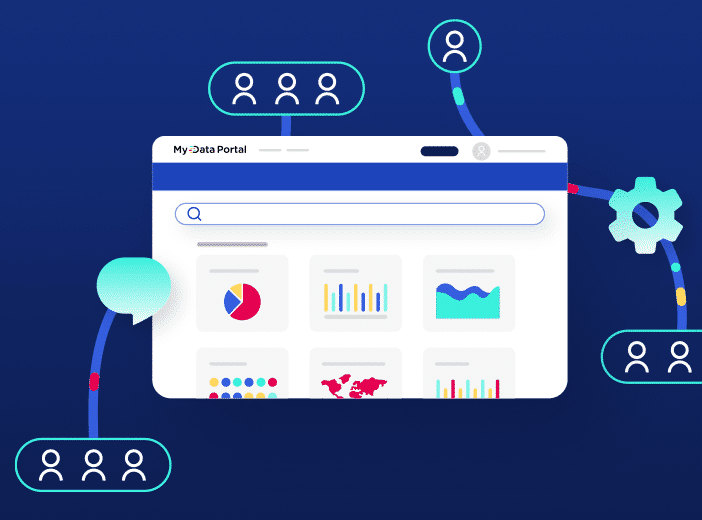Glossary
No-code
No-code solutions enable non-specialists without programming skills to quickly and easily develop and publish full software applications.
What is no-code?
No-code solutions allow anyone to develop programs, from web-based enterprise solutions to mobile apps, by using drag and drop graphical interfaces and pull-down menus, without needing to write a single line of code.
This means that programs can be created by non-specialists, without having to rely on trained, expert developers with knowledge of specific programming languages.
What is the difference between no-code and low-code?
While often grouped together with no-code solutions by analysts such as Gartner, low-code programs do require some basic coding. They cannot be created simply by clicks of the mouse or dragging and dropping elements on screen. However, this coding is normally minimal and relatively easy to learn by non-specialists.
The main difference between the two approaches is where and how they are used:
- No-code: line of business apps, especially mobile, reporting and analytics that are often standalone programs
- Low-code: more complex, business critical apps that run foundational processes, have a longer lifespan and may need to integrate with other programs
How do no-code solutions work?
No-code solutions provide users with a simple to use, intuitive graphical interface, where they can design and test their apps. Creating a program could involve dragging and dropping elements on the page or adding functionality through pull-down menus. Templates are provided for common needs, such as creating forms, dashboards or workflows.
The tool may also guide the user through the creation process, splitting it into individual steps and offering choices at each one. Powerful in-built APIs automate integration with external programs or data sources at the click of a mouse button.
However it is achieved, there is a clear visual representation of the app that has been created, showing the elements within it, enabling the user to clearly see what they built and to then test and deploy it. This could mean publishing it as an app, as a web page, dashboard or data visualization.
While early no-code platforms were limited to creating basic apps, they have now developed to offer a richer range of features, enabling more complex programs to be built with them.
Why are no-code solutions being adopted?
There are four main reasons for the growth of no-code development:
- A shortage of specialist developers. This leads to delays and backlogs in creating business apps, while pushing up costs.
- Digitization of processes. Companies increasingly want to digitize and improve their processes through software, but are held back by a lack of specialist developers.
- Software democratization. As more and more employees use software within their daily working lives they want to be able to access information and streamline processes without relying on IT.
- A growing number of no-code platforms. An increasing number of vendors now offer no-code platforms, either as standalone software or as part of their overall suite. For example, developers can code more complex apps, while drag and drop interfaces enable non-specialists to create their own, simpler apps.
What are the advantages of no-code solutions?
Today, organizations of all types rely on software to increase efficiency, boost competitiveness and deliver innovation. Companies want to become data-driven and unlock the information within their business to out-perform their rivals and meet changing customer needs.
No-code solutions deliver competitive advantage by:
- Speeding up development. Apps can be created quickly by users, with minimal or no training. There is no need to wait for IT or the development team to work on the project.
- Lower resource requirements. As well as saving time, no-code solutions also bring down costs, as they do not require the skills of expensive, trained programmers. They therefore democratize software development.
- A better fit for user needs. Despite extensive prototyping software created by developers often do not exactly meet user requirements. No-code solutions empower these users to develop software themselves, ensuring it exactly matches their needs. This increases usage, engagement and ROI.
- Greater agility. Due to the speed and ease of development, no-code solutions can be created and adapted quickly to meet changing business requirements. This flexibility makes it easier to successfully react to new market opportunities.
- Greater efficiency. Companies can use no-code platforms to digitize and automate processes, saving employees’ time and enabling them to focus on higher-value tasks.
Learn more

Blog
Increasing data collection and driving collaboration through built-in forms
Data doesn’t just come from business systems and data producers - it can equally be provided by users and data consumers, widening the range of assets on your data marketplace. We explain how collecting data through integrated forms increases engagement, democratizes collection and strengthens your data community.

Blog
3 key collaborative features to engage data consumers with your data portal
How can you break down silos and make data available to everyone within your organization, not just data specialists? How do you get employees to use data effectively in their everyday working lives? This article explains the key features you need on your data portal to engage users and maximize data sharing and reuse.

Blog
Accelerating statistical data sharing with SDMX and intuitive data portals
Access to accurate statistical information is key to the successful functioning of the global economy and for policymakers and businesses to make informed decisions around subjects that impact us all. How can institutions effectively and efficiently share their statistical data in an interoperable, scalable way to democratize access and build trust?
